Paul Bishop's Blog, page 48
February 9, 2015
NOIR NOW!
Published on February 09, 2015 08:00
February 8, 2015
DICK TRACY HALL OF FAME
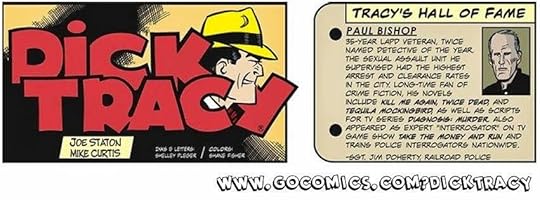 DICK TRACY HALL OF FAME
DICK TRACY HALL OF FAMETHIS WAS CERTAINLY A DELIGHTFUL TURN OF EVENTS TO FIND MYSELF FEATURED IN THE DICK TRACY HALL OF FAME ... THX, JIM DORHETY ... A REAL HONOR ...
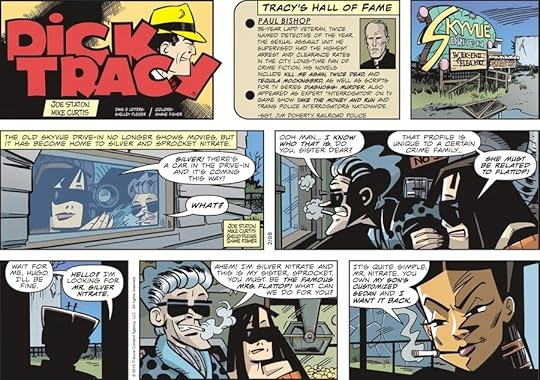
Published on February 08, 2015 21:53
February 4, 2015
PULP NOW: WORDSMITH
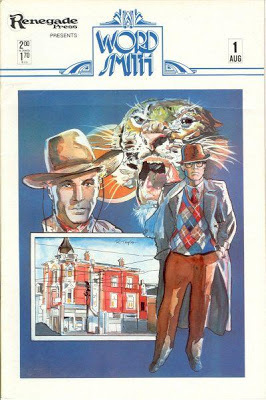 PULP NOW: WORDSMITH!
PULP NOW: WORDSMITH!Written in 1985/86, Wordsmith was a twelved issue series from Renegade Comics. It was very different in tone from the ususal comic fare of the time, but I enjoed every issue because of it's connection to the heart of the pulps and the men who wrote for them ...
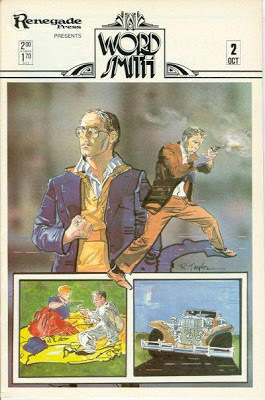 Wordsmith tells the story of Clay Washburn, a penny-and-a-half a word pulp writier trying to make it from day to day during the Great Depression. Clay wants to write more important things, but the fates conspire to constantly keep him from this dream ...
Wordsmith tells the story of Clay Washburn, a penny-and-a-half a word pulp writier trying to make it from day to day during the Great Depression. Clay wants to write more important things, but the fates conspire to constantly keep him from this dream ... 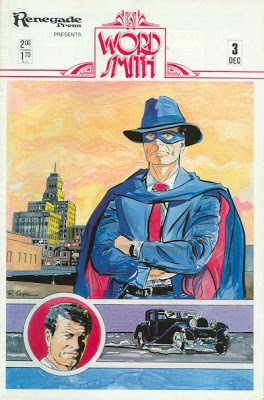 Told in a stark, stripped down prose and an artistic style combining the look of line drawings under watercolors, Clay deos not solve crimes or fight evil doers in his spare time, he just writes and, frankly, spends a lot of time feeling sorry for himself for finiding himslef trapped in the story hungry world of the pulps ...
Told in a stark, stripped down prose and an artistic style combining the look of line drawings under watercolors, Clay deos not solve crimes or fight evil doers in his spare time, he just writes and, frankly, spends a lot of time feeling sorry for himself for finiding himslef trapped in the story hungry world of the pulps ...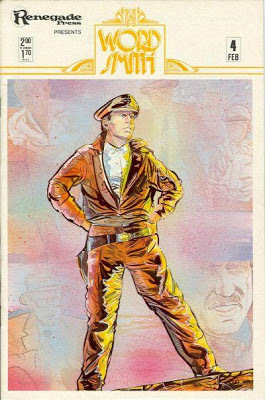 THE ACTION IN THE SERIES COMES ONLY FROM DEPICTIONS OF THE STORIES HE WRITES, WHICH ARE REALLY AT THE HEART OF THE SERIES.
THE ACTION IN THE SERIES COMES ONLY FROM DEPICTIONS OF THE STORIES HE WRITES, WHICH ARE REALLY AT THE HEART OF THE SERIES.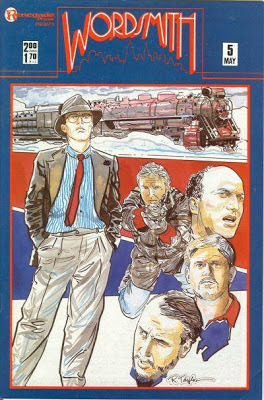 It's as if somebody turned Frank Gruber's Pulp Jungle into a comic book ...
It's as if somebody turned Frank Gruber's Pulp Jungle into a comic book ... 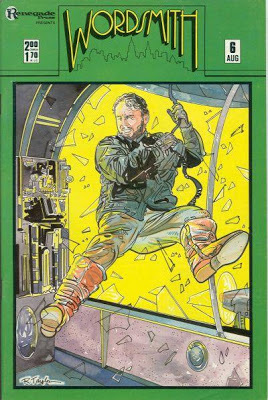 Good stuff, and still available with a little Google action ...
Good stuff, and still available with a little Google action ... 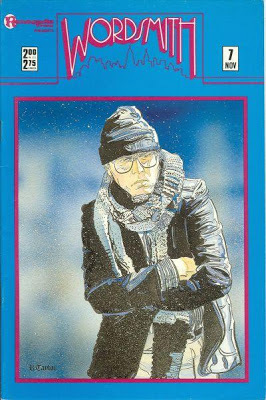
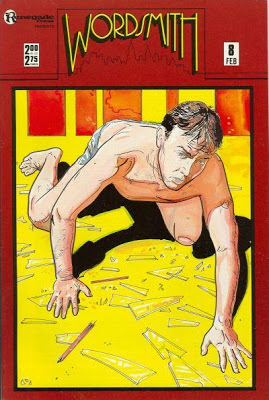
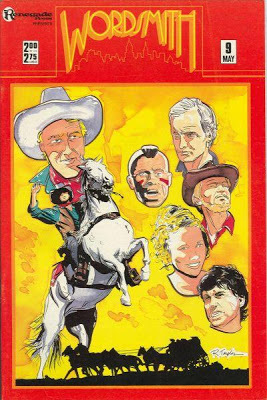
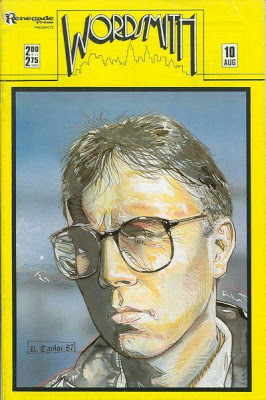
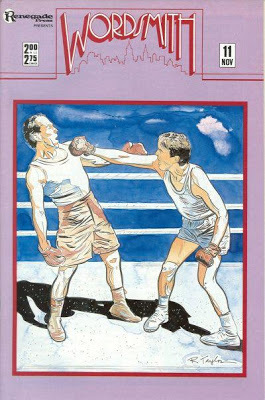
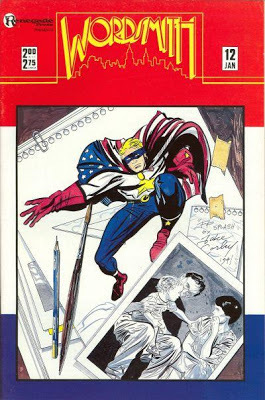
Published on February 04, 2015 18:56
January 25, 2015
REMEMBERING AUTHOR GERALD HAMMOND
 REMEMBERING AUTHOR GERALD HAMMOND
REMEMBERING AUTHOR GERALD HAMMONDI have just received the sad news of the passing of prolific Scottish mystery writer Gerald Hammond. I’ve been friends with Gerald for many years. We exchanged letters and then e-mails for years, sharing writing problems, creating plots together, and generally enjoying each other’s company. I even had the opportunity to meet Gerald and his wife Gilda for dinner one evening as they passed through Los Angeles on their way to a cruise ship.
Born in 1926, Gerald lived in Scotland, where he retired from his profession as an architect in 1982 to pursue his love of shooting and fishing and to write full time. After his first novel, Fred in Situ, was published in 1965, Gerald became a prolific author with over 70 published novels. His last title, The Unkindest Cut, was published in 2012. Most of his novels were published under his own name, but he also wrote under the pseudonyms Arthur Douglas and Dalby Holden.
Gerald is best known for his two mystery series characters: Gunsmith Keith Calder, and Three Oaks dog kennel owner John Cunningham. Both series allowed Gerald to indulge in his passions for guns, dogs, bird hunting, fly fishing, and all things outdoors in the Scottish countryside.
In his late seventies and eighties, while up and down in health, Gerald mostly left his series characters behind. He focused instead on standalone novels. Most of these were mysteries, but others featured excitements or passions that caught his fancy, including Formula One racing (Fine Tune), and gliding (Into the Blue).
In the twenty-three Keith Calder novels and the eleven Three Oaks novels, Gerald created enduring characters with strong family ties who all aged appropriately as the series continued. Often, Gerald let one of the series secondary characters take center stage if the plot revolved around something specific to their personality or situation.
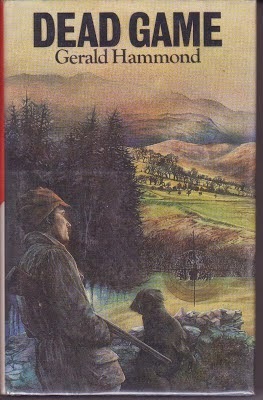 The Keith Calder series started with Dead Game in 1979: Keith Calder is an itinerant gunsmith and shooting instructor. He is also a rascal with total disregard for the law, a skilled and dedicated poacher of birds of both feathers.
The Keith Calder series started with Dead Game in 1979: Keith Calder is an itinerant gunsmith and shooting instructor. He is also a rascal with total disregard for the law, a skilled and dedicated poacher of birds of both feathers.Calder is the guest at a shoot in the Scottish Borders when one of the syndicate members dies – apparently by accident. However, a bullet is found in his body. Yet only shotguns were carried on the shoot. Was he killed by a sniper or by a stray bullet? Or is there some other explanation?
Calder has a personal and very secret interest in the case, but his involvement deepens when the brother of his current girlfriend, Molly, is arrested and charged with the murder – especially as there is no love lost between the two men.
Molly asks Keith to use his expertise on her brother’s behalf. But in agreeing to make his own inquiries, Calder finds he is trying to save himself, and his activities lead him and Molly into violent personal danger.
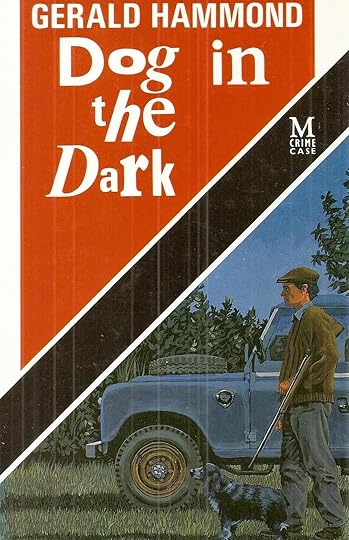 In 1989, Gerald introduced Captain John Cunningham in the first Three Oaks mystery, Dog in the Dark: Captain John Cunningham is a veteran of the Falklands war who has recently been invalided out of the army. Deciding to set up in civilian life as a trainer and breeder of gun dogs – a passion he can indulge and also earn a little money. He takes on Isobel Kitts as a partner, a trained vet whose skill is matched, perhaps too strongly, by her enthusiasm.
In 1989, Gerald introduced Captain John Cunningham in the first Three Oaks mystery, Dog in the Dark: Captain John Cunningham is a veteran of the Falklands war who has recently been invalided out of the army. Deciding to set up in civilian life as a trainer and breeder of gun dogs – a passion he can indulge and also earn a little money. He takes on Isobel Kitts as a partner, a trained vet whose skill is matched, perhaps too strongly, by her enthusiasm. Dog breeding proves to be a ruthlessly competitive business – and a hazardous one, as Cunningham learns when another breeder is found murdered. Wore, it is soon discovered that the weapon was a product of Cunningham’s own workshop.
With the comfortable new life he’s planned under threat, Cunningham must extricate himself from a situation as dangerous, in its way, as anything he faced during his military career.
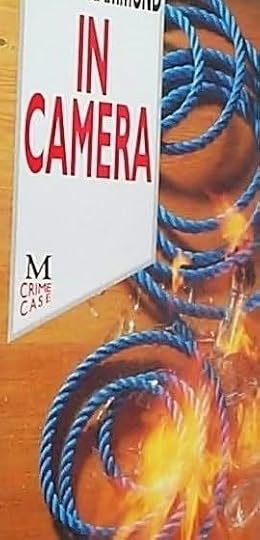 1991 brought the publication of the seventeenth Keith Calder novel, In Camera, a tale which Gerald and I had discussed in depth as it was being written. My copy is hand inscribed in Gerald’s inimitable scrawl: Paul, you suggested parts of the plot. Now here's your promised copy. Hope you like it. Gerald. It holds pride of place on the shelf-and-a-half of my bookcases, which hold copies all of Gerald’s novels.
1991 brought the publication of the seventeenth Keith Calder novel, In Camera, a tale which Gerald and I had discussed in depth as it was being written. My copy is hand inscribed in Gerald’s inimitable scrawl: Paul, you suggested parts of the plot. Now here's your promised copy. Hope you like it. Gerald. It holds pride of place on the shelf-and-a-half of my bookcases, which hold copies all of Gerald’s novels. 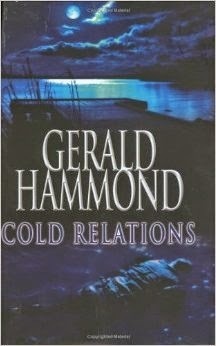 In 2006, Gerald introduced another series character, Edinburgh's Detective Sergeant Honey Laird and her trusty crime-solving labrador, Pippa. Cold Relations was Honey’s first case, and was followed by two other novels in the series in 2007, A Dead Question and Loving Memory.
In 2006, Gerald introduced another series character, Edinburgh's Detective Sergeant Honey Laird and her trusty crime-solving labrador, Pippa. Cold Relations was Honey’s first case, and was followed by two other novels in the series in 2007, A Dead Question and Loving Memory.With his expert knowledge of guns and his love of the Scottish countryside, Gerald created marvelous backgrounds against which he set puzzling, credible, and thoroughly entertaining whodunits. His books were not long tedious, padded, thrillers. Instead they are almost of another age, ingenious plots, characters with whom you want to spend time, and a world to which you eagerly anticipate returning.
I enjoyed each of the books in all of Gerald’s series – and his standalones – and I continued to read and savor each new Gerald Hammond novel as it arrived. I am sad there will be no more to read. I am even sadder to have lost a good friend, but know Gerald lived a full life surrounded by family and dogs who loved him, and by the beauty of the Scottish outdoors he cherished so dearly.
For a full bibliography of Gerald Hammond’s books CLICK HERE
Published on January 25, 2015 15:04
January 24, 2015
WRITING A BESTSELLER
 WRITING A BESTSELLER
WRITING A BESTSELLERI recently had lunch with a very successful writer friend, who has been delighted to find his last three books landing high on the New York Times Bestseller List. His success is well deserved. He works extremely hard every day, and he never hesitates to help out writers and others. He even picked up the tab for our lunch.
Our conversation roamed from past mutual projects, to mutual friends, to ongoing publishing activities. Here my friend paused before giving credit to another bestselling writer for teaching him a number of the traits common to the genre of fast moving thrillers on the bestseller list. He then listed those things in quick succession:
Never use a dollar word when a nickel word will do…don’t use ‘cacophony’ when ‘loud’ makes your point.
Short sentences. Short paragraphs. Short chapters.
Never over describe a room. Pick out one feature and move on.
The same applies to what a character is wearing.
Use dialogue to drive your story.
Cut exposition to an absolute minimum.
Simplify your plotting…then simplify it some more…then some more. If a reader has to backtrack to figure out what was going during their last reading session, you’re doing it wrong.
I must confess, this list initially blew past me. I like the word cacophony, and (as a reader) I’m not much of a fan of what is on the New York Times Bestseller List. However, as I drove home, my friend’s succinct points kept coming back into my mind. I’d read two of his legitimately bestsellingnovels and enjoyed them. I could see where he had applied each of the edicts, err, I mean points, he’d listed. But I also had an epiphany, err, I mean, I realized how hard they were to follow.
It was also clear, while not every bestseller is written this way, there are a number of writers, employing this style of storytelling, who are regular names on the bestseller list – starting with James Patterson.
Okay! Okay! Stop throwing things at me. Whether you’re a fan of James Patterson (readers) or a hater (a lot of less successful writers – go on, admit it), Patterson’s books employ all of the points in the above list and regularly steal spots on the New York Times Bestseller List (for weeks and weeks) from the rest of us toiling honestly to pound out stories. Love him or hate him, Patterson (and his brand) sells books – a lot of books – and so do a number of other bestselling writers who have mastered the above skills.
However, I meant what I said above. Writing simply, as described, is not easy. Back home, I took a sharp look at my work in process and thought long and hard about those simple rules. I abided by some of them. Others, not so much. Did this mean I wasn’t writing a bestseller?
W. Somerset Maugham famously said, “There are three rules for writing a novel. Unfortunately, no one knows what they are.” Being a professional writer brings with it a responsibility to not just take a harsh look at the content of your own work, but also have a realistic view of what you are expecting your work to accomplish.
My question should not have been, did this mean I wasn’t writing a bestseller? What I needed to ask myself is, was I writing the type of book I’d set out to write? Was my goal to write a bestseller, or the typeof book that ends up on the bestseller list? Or was I writing a book with another goal?
What do you mean another goal? Isn’t getting on the New York Time Bestseller List the goal of every writer?
No, I don’t think it is.
Through the machinations of publishing, my friend had fortunately found himself writing a book expectedby the publisher to end up on the bestseller list. Might his book have been different, better, worse, if that had not been the end goal from page one?
Any writer who has had published stories kicked around knows there is a lot more that goes into getting on the bestseller list than just writing a good story – often things beyond the writer’s control. My friend had written many, many, other published books that had sold well, but hadn’t cracked the bestseller list. Were they not as good as the ones that made the bestseller list? Silly question. Of course they were. But they were different, not containing the hard earned simplicity lessons, he’d skillfully (sometimes under duress) learned to apply to those books that did make the bestseller list.
So what was my goal when I started writing my current work in progress?
Sure, I had a story I wanted to tell, a story I thought was worth telling, with characters who had resonance for me – but what was my goal? The New York Times Bestseller List?
Actually, that thought never occurred to me.
I just wanted to write the best book I could write right now…
And there’s the key for me. Maybe one day the planets will align and a novel I write will somehow end up on the New York Times Bestseller List or make it into the Thursday book listings in USA Today…But that’s not my goal.
If I write the best book I can, tell my story the best way Ican, with passion and commitment, then I’ve achieved my goal. I just need to keep putting words on paper. I need to keep learning, keep considering the guidance of my fellow writers and take from it what helps me be a better writer, helps me tell my stories better…and let the bestseller lists take care of themselves.
What’s your goal?
Published on January 24, 2015 21:11
WRITING A BESTSELLERI recently had lunch with a very succ...
 WRITING A BESTSELLER
WRITING A BESTSELLERI recently had lunch with a very successful writer friend, who has been delighted to find his last three books landing high on the New York Times Bestseller List. His success is well deserved. He works extremely hard every day, and he never hesitates to help out writers and others. He even picked up the tab for our lunch.
Our conversation roamed from past mutual projects, to mutual friends, to ongoing publishing activities. Here my friend paused before giving credit to another bestselling writer for teaching him a number of the traits common to the genre of fast moving thrillers on the bestseller list. He then listed those things in quick succession:
Never use a dollar word when a nickel word will do…don’t use ‘cacophony’ when ‘loud’ makes your point.
Short sentences. Short paragraphs. Short chapters.
Never over describe a room. Pick out one feature and move on.
The same applies to what a character is wearing.
Use dialogue to drive your story.
Cut exposition to an absolute minimum.
Simplify your plotting…then simplify it some more…then some more. If a reader has to backtrack to figure out what was going during their last reading session, you’re doing it wrong.
I must confess, this list initially blew past me. I like the word cacophony, and (as a reader) I’m not much of a fan of what is on the New York Times Bestseller List. However, as I drove home, my friend’s succinct points kept coming back into my mind. I’d read two of his legitimately bestsellingnovels and enjoyed them. I could see where he had applied each of the edicts, err, I mean points, he’d listed. But I also had an epiphany, err, I mean, I realized how hard they were to follow.
It was also clear, while not every bestseller is written this way, there are a number of writers, employing this style of storytelling, who are regular names on the bestseller list – starting with James Patterson.
Okay! Okay! Stop throwing things at me. Whether you’re a fan of James Patterson (readers) or a hater (a lot of less successful writers – go on, admit it), Patterson’s books employ all of the points in the above list and regularly steal spots on the New York Times Bestseller List (for weeks and weeks) from the rest of us toiling honestly to pound out stories. Love him or hate him, Patterson (and his brand) sells books – a lot of books – and so do a number of other bestselling writers who have mastered the above skills.
However, I meant what I said above. Writing simply, as described, is not easy. Back home, I took a sharp look at my work in process and thought long and hard about those simple rules. I abided by some of them. Others, not so much. Did this mean I wasn’t writing a bestseller?
W. Somerset Maugham famously said, “There are three rules for writing a novel. Unfortunately, no one knows what they are.” Being a professional writer brings with it a responsibility to not just take a harsh look at the content of your own work, but also have a realistic view of what you are expecting your work to accomplish.
My question should not have been, did this mean I wasn’t writing a bestseller? What I needed to ask myself is, was I writing the type of book I’d set out to write? Was my goal to write a bestseller, or the typeof book that ends up on the bestseller list? Or was I writing a book with another goal?
What do you mean another goal? Isn’t getting on the New York Time Bestseller List the goal of every writer?
No, I don’t think it is.
Through the machinations of publishing, my friend had fortunately found himself writing a book expectedby the publisher to end up on the bestseller list. Might his book have been different, better, worse, if that had not been the end goal from page one?
Any writer who has had published stories kicked around knows there is a lot more that goes into getting on the bestseller list than just writing a good story – often things beyond the writer’s control. My friend had written many, many, other published books that had sold well, but hadn’t cracked the bestseller list. Were they not as good as the ones that made the bestseller list? Silly question. Of course they were. But they were different, not containing the hard earned simplicity lessons, he’d skillfully (sometimes under duress) learned to apply to those books that did make the bestseller list.
So what was my goal when I started writing my current work in progress?
Sure, I had a story I wanted to tell, a story I thought was worth telling, with characters who had resonance for me – but what was my goal? The New York Times Bestseller List?
Actually, that thought never occurred to me.
I just wanted to write the best book I could write right now…
And there’s the key for me. Maybe one day the planets will align and a novel I write will somehow end up on the New York Times Bestseller List or make it into the Thursday book listings in USA Today…But that’s not my goal.
If I write the best book I can, tell my story the best way Ican, with passion and commitment, then I’ve achieved my goal. I just need to keep putting words on paper. I need to keep learning, keep considering the guidance of my fellow writers and take from it what helps me be a better writer, helps me tell my stories better…and let the bestseller lists take care of themselves.
What’s your goal?
Published on January 24, 2015 21:11
January 23, 2015
FIGHT CARD UPDATE ~ JANUARY 2015
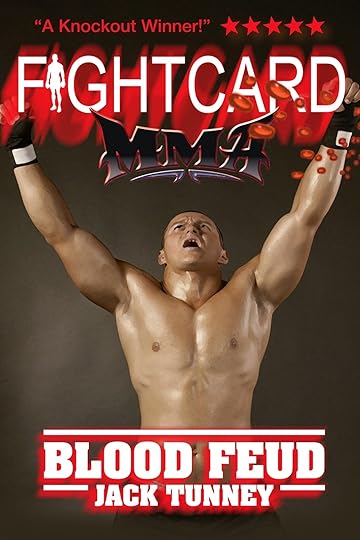 FIGHT CARD UPDATE ~ JANUARY 2015
FIGHT CARD UPDATE ~ JANUARY 2015Our latest Fight Card MMA title, Blood Feud, features Tim Tresslar masquerading as Jack Tunney. Tim has a strong background writing men’s action adventure novels and, in Blood Feud, he gives us a wonderful idea of what a Mack Bolan/ Fight Card mash up might look like.
FIGHT CARD MMA: BLOOD FEUD
Dubai, 2015…David Garrett never could walk away from a fight. Even when a covert mission to nab a terrorist went wrong, leaving fellow CIA agents dead and Garrett holding the bag, he had to be forced to stand down.
Angry and disillusioned, he returned to his native Chicago where he engaged in off-the-books bouts for money, settled scores and made new enemies. Still, the unfinished business eats at him. Then Melissa, his former lover and fellow CIA agent, surfaces. She tells him one of the men responsible for the debacle in Iraq has surfaced. Like Garrett, the man is a fighter and on the card for an exhibition bout in Dubai. Would Garrett come back for one last mission? Garrett never could walk away from a fight. Even one that could kill him…
"This one-two punch from Tim Tresslar has a power not seen since Ali beat Frazier. Blood Feud is a smoking-hot thriller guaranteed to hit so hard you'll see stars the next day still. Go get it – and prepare to stay up all night reading. Yeah, it's that good." Bestselling author Shane Gericke, The Fury
As Fight Card enters 2015 our schedule, due to books on hand, will more than likely be changing to publication every two months. We do have a third Fight Card Sherlock Holmes coming from Andrew Salmon, Job Girl – the sequel to Monster Man – from Jason Chirevas, a yet to be titled outing from Walt Lang, and several other irons heating in the fire.
Thanks to everyone for all you do for Fight Card…
Till next time…Keep punching…
Published on January 23, 2015 21:45
PULP NOW: ESCAPE FROM PRISON BASE LUNA
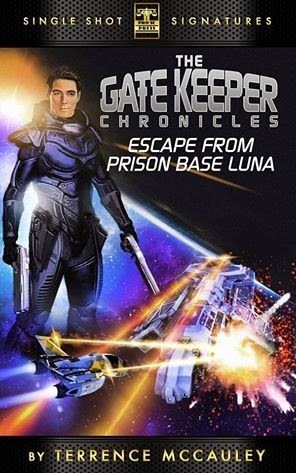 PULP NOW: ESCAPE FROM PRISON BASE LUNA
PULP NOW: ESCAPE FROM PRISON BASE LUNAFIGHT CARD ALUM TERRENCE MCCAULEY TURNS HIS PRODIGIOUS WRITING SKILLS TO A NEW PULPCENTRIC SCI-FI SERIES ... THE GATE KEEPER CHRONICLES ...
A Publisher of cutting edge New Pulp and Genre Fiction, Pro Se Productions releases the latest series in its Pro Se Single Shot Signature digital single line. Award winning author Terrence McCauley joins the Signature line up with his first Science Fiction story- The Gate Keeper Chronicles and its debut tale- Escape from Prison Base Luna.
“Terrence McCauley,” states Tommy Hancock, Editor in Chief of and Partner in Pro Se Productions, “writes with a ferocity and a singular passion that very few authors seem to have today. That aspect of his talent fits very well for the crime and noir sort of fiction he has become known for, but it also adds a whole new dimension to Science Fiction as well. Terrence not only creates a totally believable world of spacecraft and lunar prisons, but each of his characters, even the ones who are voices on a speaker in the story, leave their individual marks and have their own things to say. That makes Escape from Prison Base Luna both a fantastic sci fi yarn and just a well written tale all around.”
A hijacked star freighter…A lunar prison under siege…A Space Marshall sent to face it all alone.
In his first foray into science fiction, Terrence McCauley (winner of three New Pulp Awards in 2014) crafts a fast-paced, exciting story for the debut of The Gate Keeper Chronicles, McCauley’s Pro Se Single Shot Signature Series of digital singles.
Space Marshall Kyle Mackey is a Gate Keeper - one of the members of the Space Marshall Service to watch for unauthorized entry through the portal that allows near-instantaneous travel between Earth and Mars. But when his ship is attacked by a hijacked star freighter, Mackey feels something’s not right. And when he’s sent to investigate a downed transmitter at the moon’s Prison Base Luna, he’s absolutely sure of it. The only question: can he find the answers he needs before he loses his life?
“I’ve been writing pulp fiction for the past few years,” says McCauley, “so I’m excited to be trying my hand at science fiction. I’m glad to be part of the Pro Se Productions team and I appreciate Tommy giving me the opportunity to tackle a new genre. I hope people will enjoy reading this series as much as I enjoyed writing it.”
The Gate Keeper Chronicles: Escape from Prison Base Luna is the first entry in McCauley’s thrilling Gatekeeper Trilogy and the newest Pro Se Single Shot Signature Series!
Published on January 23, 2015 14:11
PULP NOW: CUTTER'S LAW!
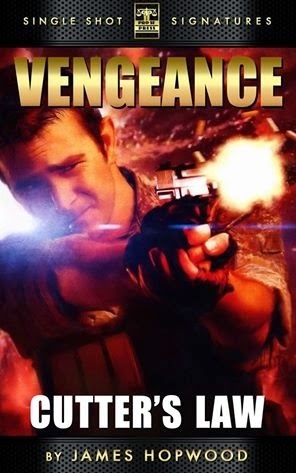 PULP NOW: CUTTER'S LAW!
PULP NOW: CUTTER'S LAW!FIGHT CARD ALUM DAVID FOSTER, WRITING AS JAMES HOPWOOD, BREAKS OUT A TERRIFIC NEW ACTION SERIES ... VENGEANCE ...
Pro Se Productions, a leader in Genre Fiction, announces the debut of yet another action packed series as a part of its Pro Se Single Shot Signature imprint. The Single Shot Signatures are recurring series or writers’ imprints that focus on digitl single short stories released on a set schedule. Author David Hopwood takes readers back to the adrenaline fueled, pulpy tales of adventure and danger with his series, Vengeance and the debut tale- Cutter’s Law!
Scribed by James Hopwood (pen name of rising pulp adventure writer David J. Foster), the series features Nathan Cutter, an Australian soldier whose life is turned upside down when his family become innocent victims in a gangland war. Written in the style of the men’s action-adventure stories of the 1970s and ’80s, such as The Executioner, these fast-paced stories ratchet mayhem and excitement to new levels.
“The Men’s Adventure novels of the 1970s and ’80s have a special place in my heart,” Hopwood said from Melbourne, Australia. “I know some of the imprints were verging on ultra right-ring fanaticism, but in their favor, they were always fast-paced with over-the-top situations and characters. Where else could you find stories about gun-toting heroes battling dirty Commies who plan to bring the west to its knees by firing atomic missiles from the turrets of 16th century European castles?”
“Of course, times have changed – enemies have changed (or have they?) – and story-telling has changed. Consequently the Men’s Adventure novels have waned in popularity. But I don’t think the genre has to go the way of the dodo bird. As a reader, the appeal for me was always traveling along with a hero who would never say die – no matter how heavily the odds were stacked against him. I think that trait is something that today’s readers can relate to. That’s where Nathan Cutter come in – he’s from that old-school tradition of never giving in.”
Cutter was first launched on the unsuspecting public in Matt Hilton’s Action: Pulse Pounding Tales in 2012 and 2013. Now he is back, in new expanded editions of the original tales, plus an explosive new story – never before published.
“I am excited to be able to re-invent these stories for a new audience, packed with new twists and turns and overflowing with gun-smoking action.”
“The Pro Se Single Shot series is a fantastic vehicle for stories such as this, and I am proud to be a part of the initiative. Before it came along, short stories such as these only existed in anthologies. And hey, that’s great too – I mean, that’s where I got my start, but now there’s an opportunity to expand on the universe created in those shorts. Readers can now follow a series, or a character like Cutter, and can be updated with regular instalments. It’s great from writers, and great for readers.”
Published on January 23, 2015 14:07
COP WRITERS ~ JOHN WAINWRIGHT
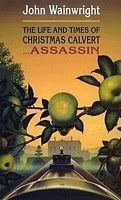 COP WRITERS ~ JOHN WAINWRIGHT
COP WRITERS ~ JOHN WAINWRIGHTFor many people, examples of cops-turned-writers begin and end with Joe Wambaugh. There is no doubt the impact Wambaugh’s The New Centurions, The Blue Knight, and his non-fiction opus, The Onion Field, had not just on mystery fiction, but on literature in general – as have his many other novels. However, while Wambaugh is the star in the constellation, there have been a great number of cops-turned-writers both before and since Wambaugh’s star began to rise – including my own contributions to the genre. One of the most prolific and best is now sadly out of print and almost forgotten. In 1947, after serving in the RAF as a rear-gunner in Number Five Bomber Command, John Wainwright join the West Riding Constabulary in northern England (near Harrogate). His career as a police constable and a detective spanned twenty years and six murder inquiries. The first of his eighty crime novels was published in 1965. He retired from the police two years later to write full time. I’ve long been a fan of Wainwright, owning most of his novels and both of his autobiographies. Recently, I took down and read his last novel, The Life and Times of Christmas Calvert Assassin, published in 1995 shortly before his death. I was suddenly captivated by the immediacy of his writing and the humanity of his characters and realized anew how good a storyteller Wainwright was. As soon as I finished, I went back and reread two of my favorite Wainwright novels, Blayde R.I.P and The Ride, and found they still had all the power and readability I remembered.
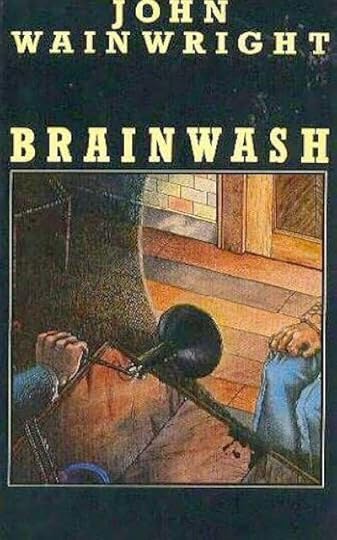 In the sixties, the Mecca of aspiring British mystery writers was a tiny London office hidden away in the former palace ofSt. James. Toget to it, you were forced to climba steep, rickety, staircase before opening the door with a knob likely to remain in your hand. However, inside the unassuming walls, the editor of theCollins Crime Club, Lord Hardinge, oversaw the massively popular monthly publication of two yellow jacketed novels from the likes of mystery mainstays such as AgathaChristie, Julian Symons, Ngaio Marsh, Rex Stout, and occasionally the debut of a new talent. It was here Wainwright’s first novel, Death in a Sleeping City, found a home after literary agent John McLaughlin insisted Hardinge read it. Hardinge was entranced not just by the sheer storytelling power of the story (regarding a Mafia hitman sent to the English provinces to kill a traitor), but particularly by Wainwright’s ability to utilize his knowledge of real police and their methods.
In the sixties, the Mecca of aspiring British mystery writers was a tiny London office hidden away in the former palace ofSt. James. Toget to it, you were forced to climba steep, rickety, staircase before opening the door with a knob likely to remain in your hand. However, inside the unassuming walls, the editor of theCollins Crime Club, Lord Hardinge, oversaw the massively popular monthly publication of two yellow jacketed novels from the likes of mystery mainstays such as AgathaChristie, Julian Symons, Ngaio Marsh, Rex Stout, and occasionally the debut of a new talent. It was here Wainwright’s first novel, Death in a Sleeping City, found a home after literary agent John McLaughlin insisted Hardinge read it. Hardinge was entranced not just by the sheer storytelling power of the story (regarding a Mafia hitman sent to the English provinces to kill a traitor), but particularly by Wainwright’s ability to utilize his knowledge of real police and their methods.
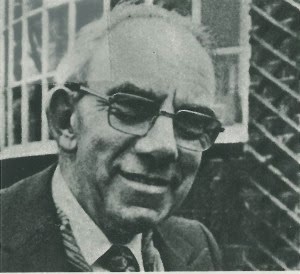 Wainwright had kept busy writing at night, often sleeping only four hours before returning to duty, and had almost finished a second novel, Death in a Sleeping City, before his first novel was published. Hardinge championed Wainwright for many years, eventually taking the author’s output with him from Collins to MacMillan because, as Hardinge stated about Wainwright’s novels, “…they all contain a strong ethical component, sincere, deeply felt and just as addictive." Joe Wambaugh classically turned the censure of his writing career by the LAPD into a cause célèbre, bringing incalculable publicity to the beginnings of his bestseller status. Like Wambaugh, Wainwright was also boycotted by his superiors in the police force. Already in difficulties for his refusal to let a County Councilor off on a dangerous driving charge, Wainwright was told he had to stop writing after his first novel appeared in bookstores. As Wainwright tells it, “[The deputy police chief] told me that I had to stop writing. I replied he could notorder me to stop, because there was nothing in police regulations prohibitingme. In any case, I had already signed a contract for three books, so I continuedto write and to be a cop.” By the time he was on his fourth novel, the stress of the two professions took its toll and Wainwright was forced to make a choice. “I had no hesitation and took off the uniform. Then, Avis [Wainwright’s wife] and I bought a small bungalow in Flamborough [on England’s east coast]and the enormity ofwhat I had done struck me and I realized I now had to write for a living.”
Wainwright had kept busy writing at night, often sleeping only four hours before returning to duty, and had almost finished a second novel, Death in a Sleeping City, before his first novel was published. Hardinge championed Wainwright for many years, eventually taking the author’s output with him from Collins to MacMillan because, as Hardinge stated about Wainwright’s novels, “…they all contain a strong ethical component, sincere, deeply felt and just as addictive." Joe Wambaugh classically turned the censure of his writing career by the LAPD into a cause célèbre, bringing incalculable publicity to the beginnings of his bestseller status. Like Wambaugh, Wainwright was also boycotted by his superiors in the police force. Already in difficulties for his refusal to let a County Councilor off on a dangerous driving charge, Wainwright was told he had to stop writing after his first novel appeared in bookstores. As Wainwright tells it, “[The deputy police chief] told me that I had to stop writing. I replied he could notorder me to stop, because there was nothing in police regulations prohibitingme. In any case, I had already signed a contract for three books, so I continuedto write and to be a cop.” By the time he was on his fourth novel, the stress of the two professions took its toll and Wainwright was forced to make a choice. “I had no hesitation and took off the uniform. Then, Avis [Wainwright’s wife] and I bought a small bungalow in Flamborough [on England’s east coast]and the enormity ofwhat I had done struck me and I realized I now had to write for a living.”
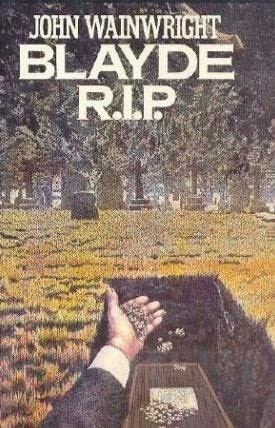 And write he did, averaging two thousand words a day, seven days a week, producing six books a year. Despite this amazing production, there was nothing cookie-cutter about his output. He wrote straight police procedurals, thrillers, espionage tales, man on the run stories, courtroom stories, and even pioneered a number of noirish tales with unreliable narrators, which are particularly fun. His agent, John McLaughlin stated, "Wainwright’s novels are always different. Every time I reada new one, I expect to be in for a predictable story, and invariably I'm wrong. I am constantly surprised by their freshness and imaginative power." It a rare interview with an Italian magazine, Wainwrightgives his own explanation for his success. "I have written sixty novels,” he said at the time, “but I threw away the equivalent of sixty more. My thing is not the traditional mysteryof who-done-it. I do not care about mysterious footprints in the flower beds, or the Lord found deadon the floor of the library because someone has launched a poisoned dart through the keyhole. I write suspense, I deal with the why-did-it. That's what fascinates me, always has fascinated me sinceI was a cop.” Finding Wainwright’s books today takes a few keystrokes to navigate the Internet’s used bookstore sites, but they are well worth the effort for those looking for well written stories based in the reality of gritty, real life, procedures.
And write he did, averaging two thousand words a day, seven days a week, producing six books a year. Despite this amazing production, there was nothing cookie-cutter about his output. He wrote straight police procedurals, thrillers, espionage tales, man on the run stories, courtroom stories, and even pioneered a number of noirish tales with unreliable narrators, which are particularly fun. His agent, John McLaughlin stated, "Wainwright’s novels are always different. Every time I reada new one, I expect to be in for a predictable story, and invariably I'm wrong. I am constantly surprised by their freshness and imaginative power." It a rare interview with an Italian magazine, Wainwrightgives his own explanation for his success. "I have written sixty novels,” he said at the time, “but I threw away the equivalent of sixty more. My thing is not the traditional mysteryof who-done-it. I do not care about mysterious footprints in the flower beds, or the Lord found deadon the floor of the library because someone has launched a poisoned dart through the keyhole. I write suspense, I deal with the why-did-it. That's what fascinates me, always has fascinated me sinceI was a cop.” Finding Wainwright’s books today takes a few keystrokes to navigate the Internet’s used bookstore sites, but they are well worth the effort for those looking for well written stories based in the reality of gritty, real life, procedures.
Published on January 23, 2015 14:01




